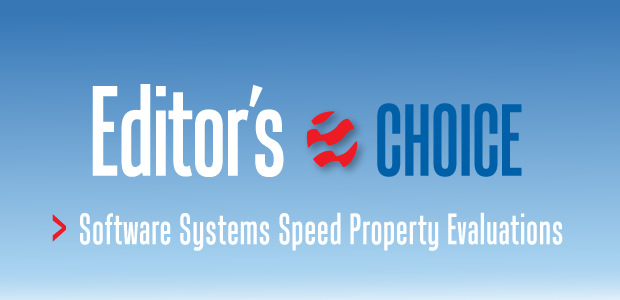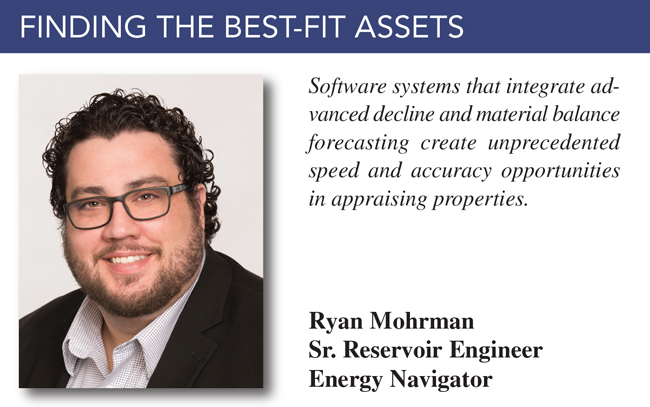
Mergers & Acquisitions
Software Speeds Property Evaluations
By Ryan Mohrman
HOUSTON–Time is money and information is the currency of trade in the oil and gas industry. Data, and the technologies used to extract intelligence from data, are at the center of every decision point in upstream workflows–whether making “drill/no drill” determinations on development prospects, or figuring out whether to pull the trigger on a property acquisition.
Today’s business environment is expected to create more opportunities for operators to acquire producing assets, but that same environment also is increasing demands on reserves-evaluation engineering as managers find it more difficult to feel confident about assets that are hovering near the break-even price at prevailing commodity price levels.
To alleviate this pressure, oil and gas companies are turning to software systems that integrate advanced engineering tools such as decline and material balance forecasting with comprehensive economic analyses and risk management functionalities.
The result is unprecedented speed and accuracy in appraising properties. In fact, some of the latest-generation software includes “quick-look” capabilities that enable engineers to complete cursory evaluations in as little as 10 minutes. The idea is to give companies the means to rapidly screen data to assess the economic potential of acquisition opportunities under various scenarios. The most favorable properties then can be selected to conduct full-scale engineering evaluations using the same datasets running in the same software.
One of the primary challenges in conducting quick-look A&D evaluations is that datasets often come from different sources and in different formats, which makes them more difficult to deal with. Software must be able to integrate all data types, whether in the form of spreadsheets or databases, and whether they come from a vendor such as IHS or DrillingInfo, or a public source.
The solution is an open database structure, and built-in automated workflows and analytical tools that increase the amount of engineering that can be done in a short time while eliminating time spent on data mining. The concept is simple: If analysts can maximize efficiency in A&D evaluations, they can focus on being engineers rather than accountants or data managers.
Auto-Forecasting Algorithms
Another potential roadblock to quick-look assessments is that forecasting wells by hand simply takes too much time. If a company is trying to evaluate multiple properties using multiple datasets, manual forecasting can become nearly impossible to manage, especially when running sensitivities using different prices, production forecasts, operating costs or other variables. It essentially requires setting up a new database every time another sensitivity is run.
Moreover, after calculating the economics, results typically are exported to Excel® spreadsheets for comparison. That causes engineering workflows to deviate from one application to another, introducing inefficiencies into the process.
To make quick-look A&D evaluations useful and accurate, engineers must be able to use software capabilities to speed forecasting, specifically auto-forecasting (or assisted forecasting) algorithms. Rather than manually forecasting large numbers of wells, the engineer can use assisted forecasting to eliminate tedious and time-consuming forecasting work, such as generating best-fit (exponential, hyperbolic or harmonic) declines, modeling multisegment declines, and forecasting high-water-cut wells or portraying rate acceleration. The software is not a substitute for the engineer’s expertise; the software does its part and the engineer does his part in auditing the results.
The next step is to define a workflow for the analysis. From an engineering perspective, it is critical to make sure workflows are repeatable because that is the only way to compare apples to apples in evaluating the results. Specific steps engineers can use in a repeatable workflow to ensure they get value out of a quick-look A&D evaluation include:
- Bulk “best-fitting” the well data for an initial pass, with the software running the forecast for the bulk imports and the engineer using his expertise to audit the computed results;
- Running economics with multiple price decks or performing a break-even analysis;
- Sorting, filtering or bucketing data into groups and building corresponding type wells, and then using that information to analog forecast wells with short production histories;
- Working out a quick drilling schedule for the asset; and
- Reviewing the economics in-line, making sure different scenarios can be run and compared.
All these workflows are completed seamlessly within the same application, and it allows the user to move cleanly between screening and full-blown economic runs. If the company decides it wants to take an acquisition opportunity to the next level, the same engineering and data from the quick-look analysis can be used within the same software to conduct a full-scale engineering study. Engineers’ time is too valuable to have to restart the process by switching to another program and starting over on a more detailed property evaluation.
Quick-Look Evaluation
This approach was applied on a 100-well dataset with the challenge of completing an evaluation within 10 minutes. It took about five minutes for the software to auto-forecast all 100 wells and the engineer to audit the results multiple times. In another five minutes, the engineer used the software to build economic cases, run price decks, build a type well, do analog forecasting, and run a brief drilling schedule.
Some managers may question whether they really can trust the results from such a fast evaluation. However, because the engineer is still able to leverage his expertise in conducting the analysis, users can be confident in auto-forecasted results and in making basic engineering decisions based on suggestions made by the application.
Even so, it can take time to build the necessary trust to let software handle forecasting functions. Engineers must make software vendors prove that trust, and run an application several times to see how it holds up.
As noted, several key software attributes are needed to enable an optimal 10-minute producing property evaluation. The ability to generate multiple forecasts simultaneously is important for setting up parameters for viewing low-, mid- and high-side cases to compare multiple scenarios and determine which forecast is most realistic. The software must allow users to make decisions in-line and run all the economics to compare alternative scenarios and forecasts.
Being able to run break-even analyses and build type wells within the application also is crucial. The user needs to know if the price decks make sense, or if they are too high or too low. Do the break-even results warrant moving forward on an acquisition analysis, or are they too negative to merit further consideration? The ability to build type wells within the same economics application workflow maximizes efficiencies and allows the engineer to focus on the evaluation rather than on exporting or importing data.
A quick drilling schedule generated in economics software is not something the reserves engineer is going to send to the drilling department, but if an oil and gas company has an interest in buying a property, managers will need to have a quick, back-of-the envelope idea of what the drilling program would look like.
A 10-minute A&D evaluation is not intended to provide the final answer on a property acquisition or engineering decision. However, it creates a workflow to maximize the efficiencies of engineering evaluations to give organizations a powerful advantage in identifying the most promising acquisition opportunities while the competition is still importing data and making manual forecasts.
RYAN MOHRMAN is a senior reservoir engineer at Energy Navigator in Houston. He specializes in database integration and architecture, engineering workflows such as reserves management, A&D evaluations and basin studies, and reporting and analytics. Mohrman joined the company in 2013 as a technical sales engineer for its integrated reserves engineering and economic analysis software. He holds a B.S. in petroleum engineering from Texas A&M University.
For other great articles about exploration, drilling, completions and production, subscribe to The American Oil & Gas Reporter and bookmark www.aogr.com.
















